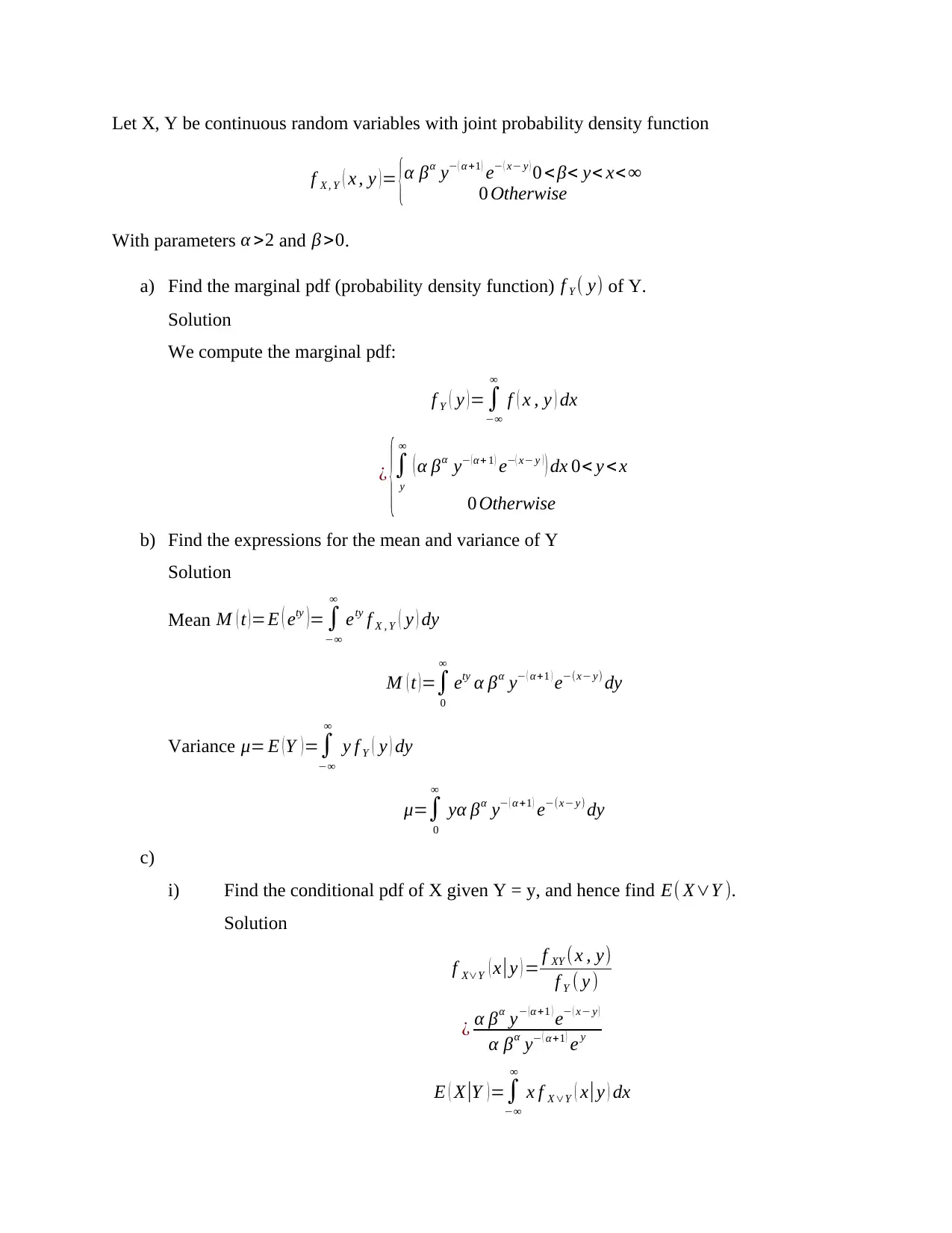University of Wollongong STAT333/STAT833 Assignment 1 Solution
VerifiedAdded on 2022/09/17
|5
|359
|24
Homework Assignment
AI Summary
This document presents a detailed solution to Assignment 1 for STAT333 and STAT833, focusing on statistical inference. The solution includes finding the marginal probability density function (pdf) of Y, calculating the mean and variance of Y, determining the conditional pdf of X given Y, and computing the expected value of X. It also covers finding the joint moment generating function, the likelihood function, and the maximum likelihood estimate. Additionally, the solution addresses the score function, observed information, and confirms that certain estimates are unbiased and consistent. The assignment utilizes concepts from probability models and statistical analysis, providing step-by-step explanations and derivations to guide the reader through complex statistical calculations.
1 out of 5





